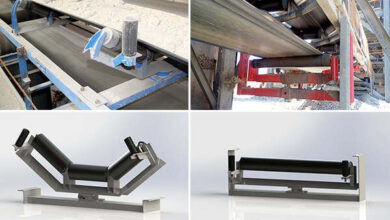Revolutionizing Innovation: The Power of 3D Printing Prototypes

In the realm of innovation, 3D printing has emerged as a disruptive force, fundamentally altering how ideas evolve from concept to reality. The advent of 3D printing technology has unleashed a wave of possibilities, particularly in the creation and utilization of prototypes.
These prototypes, once labor-intensive to produce and often limited in their fidelity, have now become intricate, detailed, and remarkably accessible thanks to 3D printing.
Unveiling the Essence of 3D Printing Prototypes
A Paradigm Shift in Prototyping
Traditionally, prototyping involved skilled craftsmanship and considerable time investments. The introduction of 3D printing revolutionized this process by enabling the creation of physical prototypes directly from digital designs, swiftly and with unparalleled precision. Click here to learn more about 3D Printing Prototypes and dive deeper into the transformative impact of this groundbreaking technology.
Diverse Applications Across Industries
The impact of 3D printing prototypes spans across industries. From automotive and aerospace to healthcare and consumer goods, technology is reshaping how products are conceived, designed, and brought to life.
The Advantages of 3D Printing Prototypes
Speed and Agility in Innovation
3D printing facilitates rapid iteration and testing. Design modifications can be implemented swiftly, reducing development cycles from weeks to days, thereby accelerating the pace of innovation.
Cost-efficiency and Resource Optimization
By streamlining the prototyping process, 3D printing minimizes material wastage and reduces labor costs. This cost-effectiveness enables businesses to experiment more freely, fostering a culture of innovation.
Enhanced Customization and Complexity
The technology enables the creation of highly customized and complex prototypes that previously seemed unattainable. From intricate geometries to personalized designs, 3D printing unlocks new levels of creative expression.
Industries Transformed by 3D Printing Prototypes
Automotive and Aerospace
In these sectors, 3D printing prototypes allow for rapid testing of new components, leading to lighter, stronger, and more efficient designs, ultimately enhancing performance and fuel efficiency.
Healthcare and Biotechnology
The impact of 3D printing in healthcare is monumental. From patient-specific implants and prosthetics to bioprinting tissues and organs, the technology is revolutionizing patient care and treatment outcomes.
Consumer Products and Design
The consumer product landscape benefits from 3D printing by enabling the creation of unique, customized products and iterating designs based on user feedback, ensuring market relevance.
Innovations in 3D Printing Technologies
Advancements in Materials
The evolution of materials compatible with 3D printing—ranging from metals and plastics to bio-inks and composites—expands the scope of applications and elevates the quality of prototypes.
Hybrid and Multi-Material Printing
Emerging technologies allow for the simultaneous use of multiple materials in a single print job, enabling prototypes with diverse material properties within a single model.
Challenges and Future Considerations
Scaling Production
While 3D printing excels in prototyping, scaling up for mass production poses challenges. Efforts are ongoing to enhance the speed and efficiency of 3D printing for larger-scale manufacturing.
Material Sustainability and Recycling
As the technology matures, the focus on sustainable materials and recycling methods becomes crucial to mitigate the environmental impacts associated with 3D printing.
The Future of 3D Printing Prototypes
Integration of 3D Printing with AI and IoT
The convergence of 3D printing with artificial intelligence and the Internet of Things promises more intelligent, autonomous, and efficient manufacturing processes.
Distributed Manufacturing and Supply Chains
Advancements in 3D printing might lead to decentralized manufacturing, allowing products to be produced closer to consumers, and revolutionizing supply chains.
Unleashing the Potential: Expanding Horizons with 3D Printing Prototypes
Industrial Transformations
Energy and Sustainability
In industries like renewable energy, 3D printing prototypes aid in creating more efficient components for wind turbines, solar panels, and energy storage solutions, fostering sustainable practices.
Robotics and Automation
The integration of 3D printing in robotics accelerates the development of custom parts and prototypes, enhancing the capabilities and versatility of robotic systems.
3D Printing in Education and Research
Hands-on Learning
Educational institutions leverage 3D printing to offer hands-on learning experiences, enabling students to explore complex concepts in engineering, design, and the sciences.
Research and Development
Researchers utilize 3D printing prototypes for rapid iteration in experimental setups, allowing for swift testing and refinement of hypotheses across various fields.
Advancements in 3D Printing Technologies
Nanoscale Printing
Emerging nanoscale 3D printing techniques hold promise in fields like medicine and electronics, enabling the creation of miniature structures with unprecedented precision.
Continuous Printing
Continuous 3D printing methods eliminate the layer-by-layer approach, resulting in faster production speeds and enhanced structural integrity in larger-scale objects.
Addressing Challenges and Opportunities
Regulatory Frameworks and Standards
Establishing standardized practices and regulations for 3D printing ensures quality control, safety, and ethical use of the technology across industries.
Skilled Workforce Development
Investments in educational programs and training initiatives are vital to nurturing a skilled workforce capable of harnessing the full potential of 3D printing technologies.
The Ethical Landscape of 3D Printing
Intellectual Property and Copyright Concerns
As 3D printing enables the replication of objects, ensuring the protection of intellectual property rights becomes increasingly challenging and critical.
Ethical Use of Bioprinting
Ethical considerations surrounding bioprinting, such as the creation of human tissue and organs, necessitate discussions on regulation, consent, and equitable access.
The Future Trajectory of 3D Printing Prototypes
Space Exploration and Colonization
3D printing’s potential in constructing habitats, tools, and infrastructure in extraterrestrial environments is pivotal for future space missions and colonization efforts.
Personalized Healthcare and Medicine
Advancements in bioprinting hold promise for personalized medicine, where organs and tissues can be tailored to individual patients, revolutionizing healthcare.
Conclusion
The revolutionizing force of 3D printing prototypes extends far beyond the manufacturing floor. It’s a catalyst for disruption, fostering creativity, sustainability, and inclusivity across industries and disciplines. As this technology continues to evolve, the horizon of possibilities expands. It’s a future where innovation is boundless, where solutions are tailored, and where the convergence of imagination and technology shapes a world of endless opportunities.




